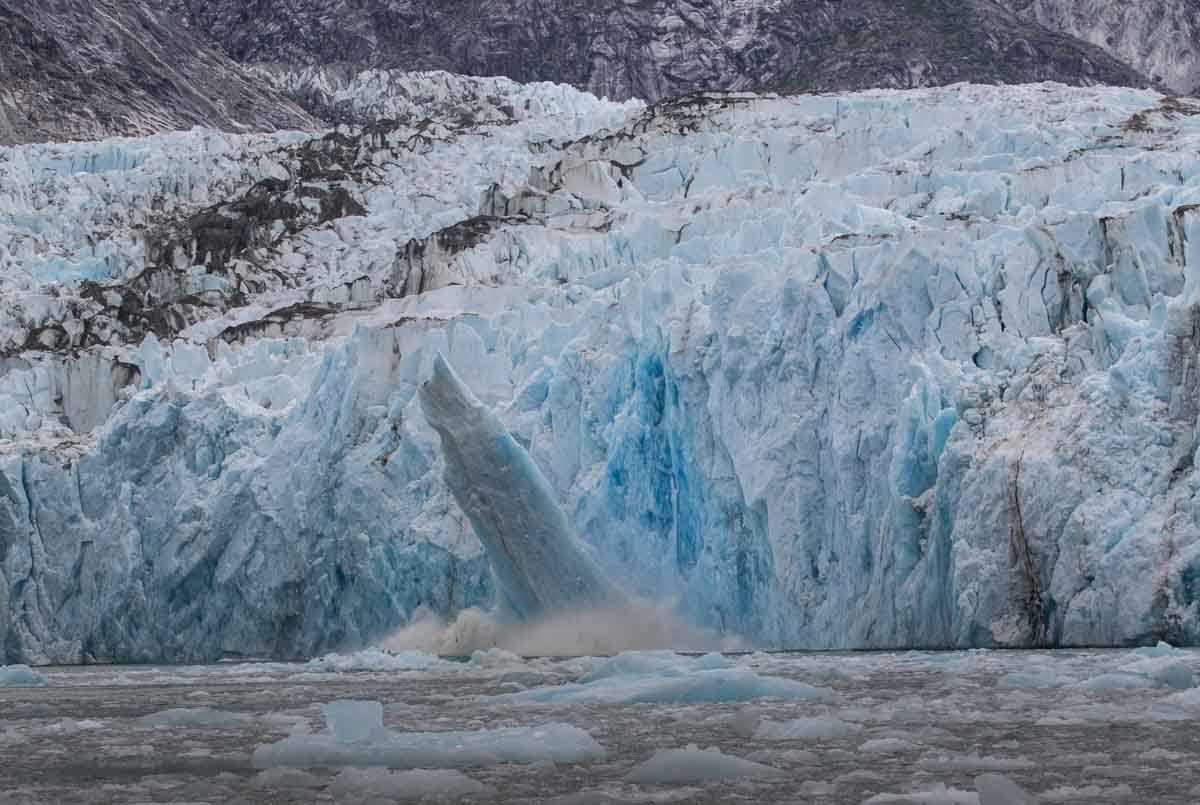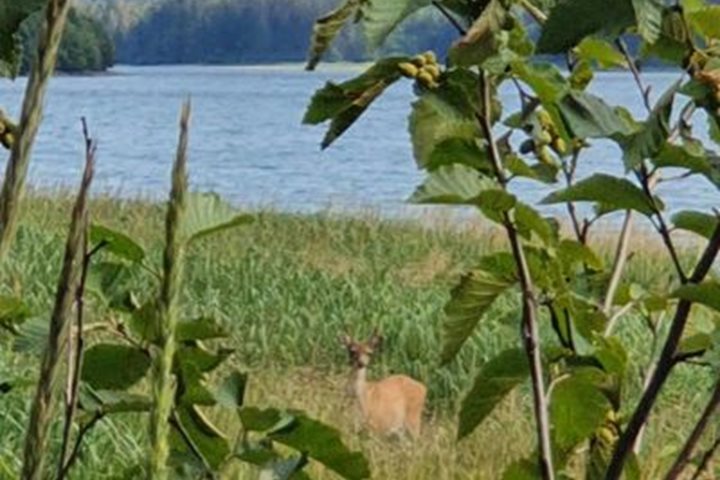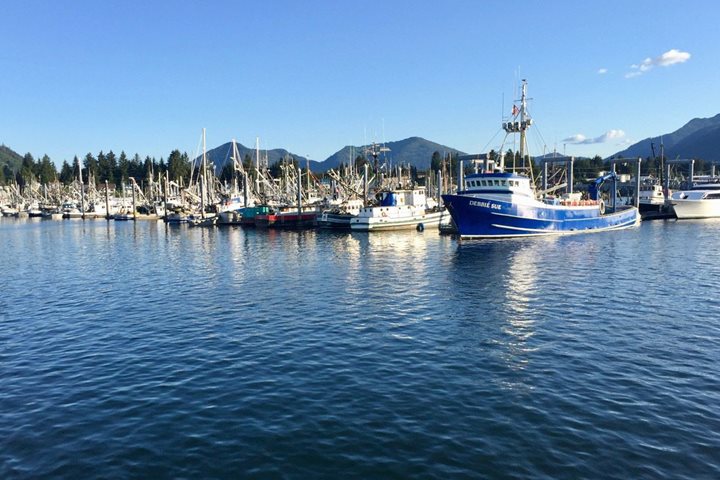This morning those aboard National Geographic Sea Bird were awoken at 4:00 a.m. to the announcement of whales. Weary eyes stirring from slumber gathered on the bow and were not disappointed as killer whales breached around the ship. Heading south down Stephens Passage we were surrounded by humpback whales followed by more killer whales as we made approach to Holkham Bay. We passed a huge iceberg with two bald eagles perched on top and got a sense that their bird’s-eye view gave them that perfect perspective to monitor all the activity above and below these incredibly rich waters. A Steller sea lion thrashed a fish as gulls flocked this pinniped for scraps. All this activity in one area gave us an immediate appreciation for the wildness that is Alaska.
After crossing the Tracy/Endicott moraine we immediately started combing the intertidal and adjacent meadow for bears. Further down the fjord an object was spotted swimming across Endicott Arm. At first we thought it was a bear but with closer inspection discovered it was a WOLF! Wolf sightings are incredibly rare let alone one swimming across a 1000-foot-deep fjord. As we penetrated further into the coastal mountains the walls of Endicott got steeper as the water below us deeper. Like a passage in time we were leaving the mature forests of Stephens Passage behind as we entered the relic landscape of the last ice age and remnants of the Cordilleran ice sheet. A landscape carved by ice this glacial past will become one of the underlying themes of this voyage.
Dropping the expedition landing craft after lunch we began to explore this icy environ and could really sense the magnitude of it all being in a small inflatable penetrating the ice. Water falling from the steep walls was an amazing sound as was the occasional creak, crack, and calve of the impressive tongue of ice, Dawes Glacier that dominated the scene. Descending from the Stikine icefield Dawes is one of four tidewaters glaciers coming from this southernmost icefield in the northern hemisphere. As we explored through brash, growlers, and bergy bits we were rewarded with huge blue bergs that must have emerged from Dawes as shooters judging by their dense blue ice and size. Arctic terns, one of the world’s longest migrants flew gracefully amongst the ice as harbor porpoises swam in search of small fish. And then what everybody hopes for—a huge calving event occurred. A large tower of a serac became unglued from the face and as if in slow motion descended to its demise. This day has undoubtedly set a high bar for the days to come.









